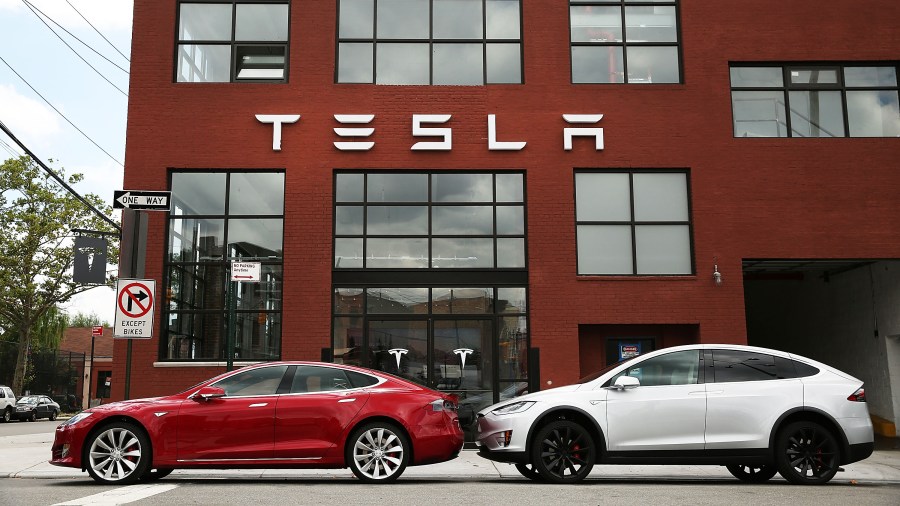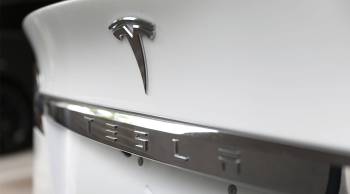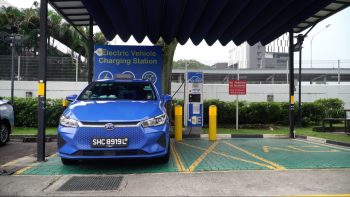Tesla’s new parked-car trick: Press a button on your phone, the car comes to you. Or close. Maybe.

Tesla’s latest over-the-air software update for its cars is perfect fodder for online viral videos. It added a feature the company calls “smart summon.” Owners use an app on their phone to summon their cars from about 200 feet away and have it drive to them all by itself — just hold down a button.
Tesla stressed it was still in beta testing and that the driver has to watch the car while it drives itself. The company also said that drivers are still responsible, even if they’re not behind the wheel.
I spoke with Ars Technica’s Timothy Lee, who watched 100 videos Tesla owners have uploaded using the smart summon feature. Lee said the results seem to vary. The following is an edited transcript of our conversation.
Timothy Lee: There can be a problem with the vehicle not staying on its side of the lane. There can be problems with the vehicle getting confused with oncoming cars, where it’s not sure if it has enough room to pass, so it stays frozen in place. It gets confused by puddles and speed bumps and other situations where there’s just something a little out of the ordinary, and is not quite sure how to proceed.
Jack Stewart: Other situations that you saw, even things like a human walking in front of a car, which you would think would be something fairly basic it would have to recognize.
Lee: Yes, so when humans walk directly in front of the car, those it seemed to consistently get, but if a human was coming up diagonally by the corner of the car, there were a couple of videos where the car came very close before it stopped, which suggested maybe it didn’t fully appreciate there was a person there. Nobody was hurt, but obviously there’s something you want to be very careful with.
To help deal with this, Tesla tells people that they should have a line of sight to the vehicle at all times. They’re supposed to have their finger on a button to keep the car moving. As soon as you take your hand off the button on a smartphone, the car’s supposed to stop. If you think about a typical parking lot situation, if you’re 100 feet from your vehicle, you might not actually have good enough visibility to make sure there’s no children or shopping carts or small animals on all sides of the car. So it does seem a little bit dangerous in that way.
Stewart: What’s Tesla’s play here? What do they hope to gain by releasing a feature like this?
Lee: Tesla’s long-term vision is that they want to get to full self-driving, by which they mean a car you can just get in, tell it where you want to go and you don’t have to do anything. It’ll take you to your destination. That’s obviously difficult and potentially dangerous thing to test on real roads. I think this is best thought of as Tesla’s first baby steps towards that goal.
This gives them an opportunity to test the technology in one of the least-dangerous situations, such as very low speed that’s not on public roads. Then we can assume that they’re gathering a great deal of data from this, about which scenarios the vehicle has trouble with. Tesla has the ability to upload video and photos and other data from scenarios where the cars have trouble, which they can then feed back into their software to improve the next version.
Stewart: I remember Audi showed off a robot valet parking system very similar to this at CES back in 2013. That’s still not available to the general public, whereas Tesla has this reputation for pushing these things out quite fast, maybe before they’re entirely ready. Overall, having watched these 100 videos of this feature in action, do you think it was a smart move on their part?
Lee: I think they released it a little sooner than I would have been comfortable releasing it if I had been in charge of Tesla. And you’re absolutely right that Tesla has a stronger appetite for risk than other companies. You see the same thing with autopilot, which is their highway driver assist technology. Tesla has aggressively pushed out features like automatic lane changing that other car companies have not rolled out. That might be because Tesla’s technology is better, but I think it’s at least partly because the other car companies are being more cautious about making sure the car can operate safely before adding new features like that.
Stewart: What are some of the liability and the responsibility issues that a feature like this raises?
Lee: I don’t think it makes that big of a change. I think that if you are holding down the button, I would think the legal system would still consider you, as the owner of the vehicle, partly responsible. Obviously, there’s been no serious accidents with this yet, so we don’t know whether Tesla would also bear liability. But certainly as the owner of the vehicle and the person who is supervising its use, the owner faces some liability, I would think.
Related links: More insight from Jack Stewart
Check out Ars Technica’s story for some entertaining GIFs of Teslas being confused by speed bumps and puddles of water. Sometimes it’s hard not to feel sorry for the poor robo-cars driving in circles or back and forth, trying to figure out a path that is intuitive to a human.
As you might imagine, a feature like this, which pushes the boundaries of what’s legal and responsible, has generated more than a few headlines. A Los Angeles Times story calls it a “self-driving nightmare” and calls on state and federal regulators to take a stronger stance on monitoring and legislating this type of technology.
Consumer Reports tried out Smart Summon and says the performance doesn’t match the hype.
“What consumers are really getting is the chance to participate in a kind of science experiment,” said Jake Fisher, the organization’s senior director of auto testing. “This is a work in progress.”
That said, it’s easy to see the potential benefits of self-parking technology. As well as being a boon to people who don’t want to run to their cars in the rain, it could help people with reduced mobility or wheelchair users. Plenty of other companies are working on the tech, from Jaguar Land Rover to Daimler.
We’ll link you to some Wired stories on why self-parking cars are the future and why you soon won’t need valet.
There are other approaches, though. The Massachusetts Institute of Technology’s Technology Review describes a parking lot at London’s Gatwick Airport, where a sort of robotic forklift will take cars away and drop them in an open space, autonomously. So the cars themselves don’t need any smarts.
Plus, if cars don’t have people in them, they can park closer together without the risk of door dings. Drivers of the future may never know that peculiar satisfaction of finding the last space, squeezing in just right and then having to climb out on the passenger side because the door won’t open.
The future of this podcast starts with you.
Every day, the “Marketplace Tech” team demystifies the digital economy with stories that explore more than just Big Tech. We’re committed to covering topics that matter to you and the world around us, diving deep into how technology intersects with climate change, inequity, and disinformation.
As part of a nonprofit newsroom, we’re counting on listeners like you to keep this public service paywall-free and available to all.
Support “Marketplace Tech” in any amount today and become a partner in our mission.





















